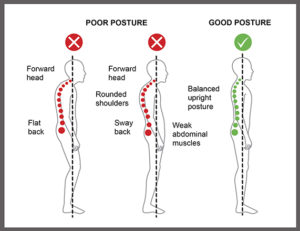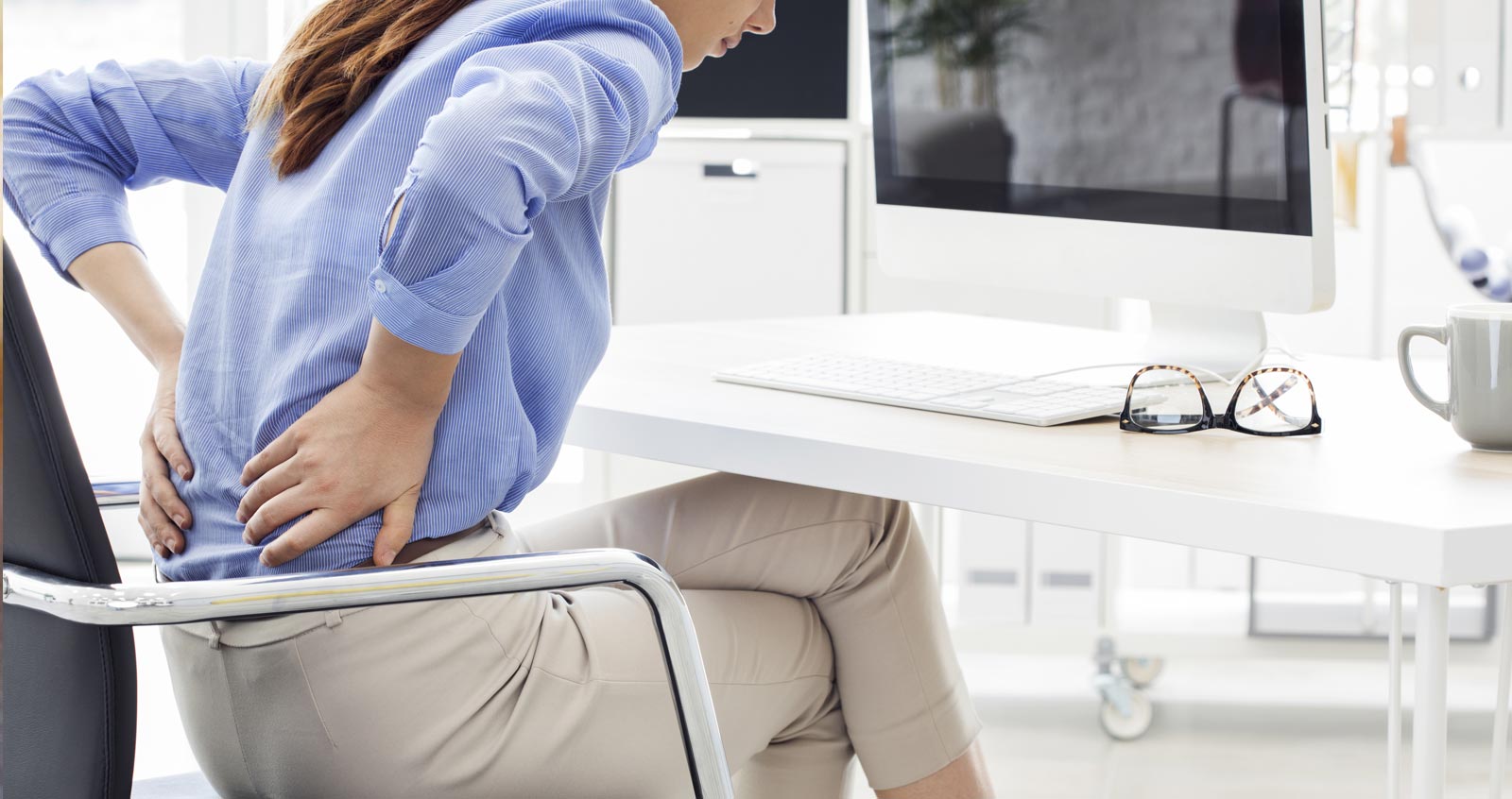By Dr. Adrian Lorenzo PT, DPT, CSCS
Avoid the Effects of Poor Posture on the Body
Cervical postural syndrome or “Poor” posture is defined as when our spine is positioned in unnatural positions, in which the curves are emphasized and this results in the joints, muscles, and vertebrae being in stressful positions.
Even hands and upper limbs and the feet and lower limbs can have pain that is directly or indirectly related to postural syndrome. These prolonged poor positioning results in a build-up of pressure on these tissues.

Symptoms:
Symptoms can vary between individuals. The most common complaint is a dull ache or burning pain in the neck, mid to upper back and/or along the tops of the shoulders. Generally speaking, the symptoms are provoked when individuals are in a faulty posture and tend to improve once they correct their posture or change positions.
Causes:
Individuals who spend a lot of time in one specific position or posture are at the highest risk of developing cervical postural syndromes. It can become tiring to stay in one position for a long period of time and when our muscles get tired, they adopt other positions that are not always ideal.
Individuals who are particularly at risk include people who spend a great deal of time focussing on something in front of them or below their line of vision such as people that sit in front of a computer, spend hours reading, studying or driving. This also includes individuals who spend hours browsing on their tablets and/or smartphones. In addition, everyday activities that require both arms to be working in front of the body, such as cooking, cleaning, and gardening to name a few, can also be particularly taxing on our posture.
In sport, the same principals apply. Athletes are at risk of developing postural syndromes if their sport requires them to maintain a position for a prolonged period of time. Cyclists are a specific population that fall in this category.
Treatment:
Most patients with postural syndrome experience no pain once their posture is corrected. This may be all that is needed to fix the problem. For others with more severe cases of Cervical postural syndrome is best managed by improving postural imbalances through an individualized corrective exercise program, manual therapies, ergonomic adjustments, and lifestyle changes. Our skilled physical therapists can work with you to develop an individualized treatment program that will be targeted to your specific needs.
Remember that you will need to make changes in muscle flexibility, strength, and endurance which takes time and commitment to a regular exercise program. To speed up your recovery and prevent future re-aggravation, you will need to make adjustments to your posture and modify any activities that provoke your symptoms.
Below are some basic exercises to achieve a good posture:
As a general rule, good posture can be obtained by ensuring there is a straight line from your ear, to your shoulder, to your hip. Here is a list of generalized exercises that can help with postural syndrome.
- Sitting: When sitting, it is important to have an ergonomically correct chair which allows you to obtain optimal posture. Your bottom should be situated at the back of the chair and a lumbar support placed in the small of your back. Your shoulders should be back slightly and your chin should be tucked in slightly. The height of the chair should ideally allow your hips and knees to be at right angles. Regular breaks from sitting are recommended with standing, walking or lying and should occur regularly enough to prevent pain onset.
- Standing: In standing, good posture can be obtained by standing against a wall. In this position, your heels, buttocks, shoulders, and head should be in contact with the wall, and your eyes and nose facing forward. Your lower back should have a slight arch.
- Lying: In lying, good posture can be obtained by lying on your back with a contoured pillow supporting your neck. Your knees may be bent or supported by a pillow for comfort. If lying on your side, it is important to lie as straight as possible and to avoid curling up into the fetal position. A pillow may be placed between your knees for comfort. Lying on your stomach is generally not recommended as this places considerable stress on your neck.
Physical therapy is the first line of treatment for a successful recovery. At Scerbo Physical Therapy & Sports Rehabilitation we are dedicated to delivering excellence in rehabilitation. Learn more about our postural syndrome program by calling (201) 941-2240 or visit us at 725 River Road, Suite 60 Edgewater, NJ.


